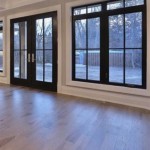Best Colors For Home Interior: A Comprehensive Guide
Selecting the right colors for a home interior is a multifaceted process that involves considering various factors, including the function of the room, the desired atmosphere, and personal preferences. Color profoundly influences mood and perception, making it a crucial element in interior design. Therefore, understanding the principles of color psychology and how different hues interact is essential for creating a harmonious and aesthetically pleasing living space.
The impact of color extends beyond mere visual appeal. It can affect energy levels, emotions, and even productivity. A well-chosen color palette can enhance the architectural features of a room, create a sense of spaciousness, and tie together disparate elements of the decor. Conversely, a poorly chosen color scheme can make a room feel cramped, unwelcoming, or visually jarring.
Understanding Color Psychology
Color psychology is the study of how colors affect human behavior and emotions. Different colors evoke different psychological responses, and understanding these associations can be beneficial when selecting colors for a home interior. For example, blue is often associated with calmness and tranquility, making it a popular choice for bedrooms and bathrooms. Green is linked to nature and freshness, often used in living rooms and kitchens to create a welcoming and revitalizing atmosphere. Red, on the other hand, is a stimulating and energetic color, best used sparingly as an accent to avoid overwhelming the space.
Yellow is associated with happiness and optimism, making it suitable for kitchens and dining areas. However, an excessive amount of yellow can be overwhelming, so it's best used in moderation or combined with other calming colors. Orange is a warm and inviting color that promotes communication and creativity, often used in living rooms and home offices. Purple is associated with luxury and creativity, making it a good choice for bedrooms and studies. Neutral colors like white, gray, and beige provide a versatile backdrop and can be paired with any color to create different moods and styles.
Furthermore, cultural influences play a significant role in color perception. Colors that are considered auspicious or positive in one culture may have negative connotations in another. When selecting colors, it’s crucial to consider potential cultural sensitivities and personal associations with specific hues.
Factors Influencing Color Choices
Several factors should be considered when selecting colors for a home interior. The size and layout of the room play a crucial role. Lighter colors tend to make a room appear larger and more open, while darker colors can make a large room feel cozier and more intimate. The amount of natural light available in the room is another important consideration. Rooms with ample natural light can handle bolder and darker colors, while rooms with limited natural light benefit from lighter and brighter hues.
The architecture of the room also influences color selection. Highlighting architectural details with contrasting colors can accentuate their beauty, while using a monochromatic color scheme can create a sense of unity and flow. The existing furniture and decor should also be taken into account. It's important to choose colors that complement the furniture and accessories, creating a cohesive and harmonious look. The function of the room is yet another critical factor. Bedrooms, for example, should be painted in calming and relaxing colors, while kitchens and living rooms can handle more vibrant and stimulating hues.
Personal preferences are, of course, paramount. Ultimately, the colors chosen should reflect the homeowner's personal style and create a space that feels comfortable and inviting. It is advisable to experiment with different colors and combinations using paint samples or digital visualization tools before making a final decision.
Popular Color Palettes for Home Interiors
Several color palettes are consistently popular in home interiors, each offering a unique aesthetic and atmosphere. A monochromatic color scheme, which involves using different shades and tints of a single color, is a timeless and elegant choice. It creates a sense of unity and sophistication, making it suitable for bedrooms, living rooms, and dining areas. A complementary color scheme, which involves using colors that are opposite each other on the color wheel, such as blue and orange or red and green, creates a vibrant and dynamic effect. This palette is best used in moderation, as the high contrast can be overwhelming.
An analogous color scheme, which involves using colors that are adjacent to each other on the color wheel, such as blue, blue-green, and green, creates a harmonious and soothing effect. This palette is suitable for bedrooms, bathrooms, and living rooms. A triadic color scheme, which involves using three colors that are equally spaced on the color wheel, such as red, yellow, and blue, creates a playful and energetic effect. This palette requires careful balancing to avoid overwhelming the space. Neutral color schemes, which involve using shades of white, gray, beige, and brown, are versatile and timeless. They provide a blank canvas that can be easily accessorized with pops of color.
In addition to these classic palettes, there are numerous trending color combinations that reflect current design trends. Earthy tones, such as terracotta, olive green, and ochre, are increasingly popular for their warmth and connection to nature. Jewel tones, such as emerald green, sapphire blue, and ruby red, add a touch of luxury and sophistication. Pastel colors, such as blush pink, mint green, and baby blue, create a soft and feminine atmosphere. Ultimately, the best color palette for a home interior depends on individual preferences and the desired aesthetic.
Specific Room Color Recommendations
The best colors for a room often depend on its specific function. For bedrooms, calming colors like blues, greens, and lavenders are optimal for promoting relaxation and sleep. These colors create a serene environment that encourages rest and rejuvenation. Neutral colors, such as soft grays and beiges, can also work well in bedrooms, providing a versatile backdrop that can be accessorized with colorful bedding and artwork.
For living rooms, warmer and more inviting colors, such as yellows, oranges, and browns, are often preferred. These colors create a cozy and welcoming atmosphere that encourages conversation and entertainment. Greens and blues can also work well in living rooms, adding a touch of freshness and tranquility. Accent walls in bold colors can add visual interest and personality to the space. Consider the existing furniture and decor when selecting colors for the living room to ensure a cohesive and harmonious look.
For kitchens, bright and cheerful colors, such as yellows, oranges, and greens, are often chosen to create an energetic and stimulating environment. These colors can help to make the kitchen feel more inviting and functional. White and light gray are also popular choices for kitchens, creating a clean and modern look. Consider the color of the cabinets and appliances when selecting paint colors for the kitchen to ensure a coordinated and visually appealing space.
For bathrooms, cool and refreshing colors, such as blues, greens, and whites, are often preferred. These colors create a spa-like atmosphere that promotes relaxation and rejuvenation. Light and airy colors can also help to make a small bathroom feel more spacious. Consider the color of the tiles and fixtures when selecting paint colors for the bathroom to ensure a cohesive and harmonious design.
Applying Color Theory to Interior Design
Effectively applying color theory is crucial for achieving a visually balanced and pleasing interior. The principles of color harmony, contrast, and balance should be considered when selecting and combining colors. Color harmony refers to the pleasing arrangement of colors, often achieved through the use of analogous, complementary, or triadic color schemes. Contrast involves using colors that are significantly different from each other to create visual interest and emphasis. Balance involves distributing colors evenly throughout the space to create a sense of equilibrium.
When working with color, it is important to consider the 60-30-10 rule. This rule suggests that 60% of the room should be the dominant color, 30% should be the secondary color, and 10% should be the accent color. This ratio helps to create a balanced and visually appealing color scheme. For example, in a living room, the walls might be painted in a neutral color (60%), the furniture might be upholstered in a complementary color (30%), and the accessories might be in a bold accent color (10%).
Furthermore, understanding the impact of light on color is essential. Natural light can alter the appearance of colors, making them appear brighter or more muted. Artificial light can also affect color perception, with warm light enhancing warm colors and cool light enhancing cool colors. It is advisable to test paint samples in different lighting conditions before making a final decision. Moreover, the texture of the surface can also influence how color is perceived. Matte finishes tend to absorb light, making colors appear softer and more subdued, while glossy finishes reflect light, making colors appear brighter and more vibrant.
Future Trends in Interior Color
Interior design trends are constantly evolving, reflecting changes in society, technology, and culture. Recent trends suggest a growing interest in natural and sustainable materials, as well as a desire for spaces that promote well-being and relaxation. As a result, earthy tones, such as terracotta, olive green, and ochre, are becoming increasingly popular. These colors evoke a sense of warmth and connection to nature, creating a calming and inviting atmosphere. Biophilic design, which incorporates natural elements into the interior, is also gaining traction.
Another emerging trend is the use of bold and saturated colors, such as jewel tones and deep blues. These colors add a touch of luxury and sophistication to the space, creating a dramatic and visually appealing effect. The increasing use of technology in interior design is also influencing color trends. Smart lighting systems allow for the customization of color temperatures and intensities, creating dynamic and adaptable living spaces. Virtual reality and augmented reality technologies are also being used to visualize and experiment with different color schemes before making any physical changes.
Sustainability will likely continue to be a major influence on interior color trends. Eco-friendly paints and finishes, made from natural and renewable resources, are becoming more widely available and popular. These products offer a healthier and more sustainable alternative to traditional paints, reducing environmental impact and promoting better indoor air quality. Ultimately, the future of interior color will depend on a combination of personal preferences, technological advancements, and a growing awareness of environmental and social responsibility.

10 Best Interior Wall Colour Combinations To Try In 2025

Exclusive Guide For Home Interior Colors Decorpot

Tips For Choosing The Best Color Your Interior Project

Best Interior Color Trends For Your Home

20 Best Room Color Combinations Eye Catching Palettes For Your Home

Choosing The Fabulous Best Interior

Home Interior Paint Colors S

5 Tips For Selecting Interior Colours Home Indigo Paints

10 Best Interior Wall Colour Combinations To Try In 2024 Nipponpaints

26 Best Interior Paint Colors For A Designer Look In Your House
Related Posts








